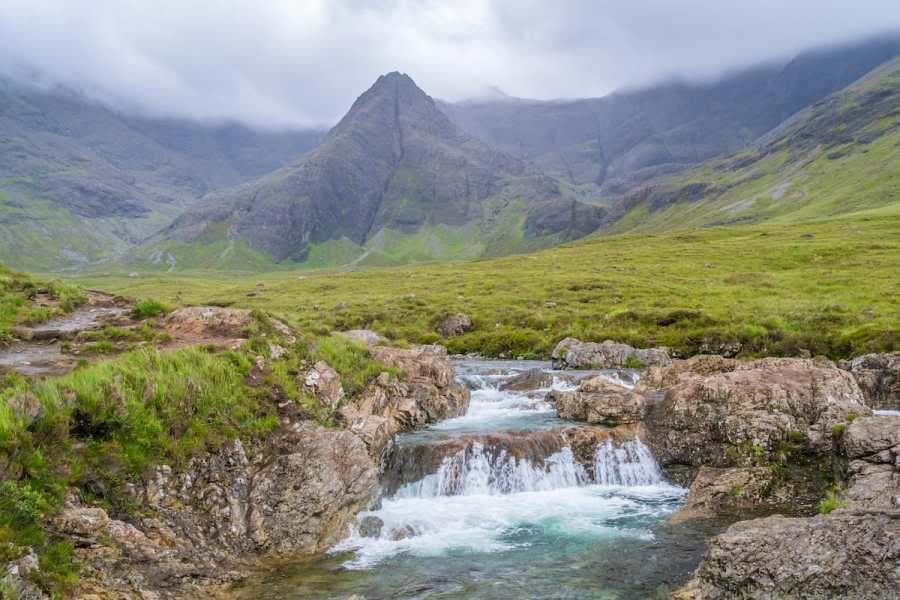Skye is one of the most beautiful of Scotland’s islands, but visitor numbers are stretching its infrastructure and services to capacity
On the 9th of August, a tweet from BBC Breakfast claimed that Police Scotland were warning tourists with no accommodation booked to stay away from the island. This was followed by a BBC news report on the overcrowding problem, repeating the statement in slightly less emotive language: “Skye is bursting at the seams. So much so that Police Scotland has advised visitors to use ‘common sense’ before travelling to the island for an overnight stay without booking accommodation.”
The Great Outdoors asked Police Scotland for a statement but did not receive a reply.
However, Lochaber & Skye Police later poured cold water on the BBC’s claims by posting this message on Twitter:
“We are not advising people not to come to Skye and not turning people away at the bridge – we love visitors and just want people to be prepared. Drive and park sensibly, think about where you are going to stay and leave the area clean and tidy as you found it. Enjoy Skye – we do!”
Breaking point
So while yesterday’s alarming news soundbites may have blown the facts out of proportion, is it true that overcrowding is a problem on Skye during the summer months?
The Great Outdoors spoke to Jamie Bankhead, an experienced mountaineering and outdoor instructor. Jamie has been walking and climbing on Skye for many years, both personally and professionally, and has witnessed a steady increase in the number of visitors.
“It’s pretty much impossible to find a bed and I’ve never seen as many pop-up tents next to hire cars in lay-bys,” he said. “The main problem, which frays locals’ nerves to breaking point, is that all the big attractions are located on single-track roads with inadequate parking. The Storr, Quiraing, Neist Point, Fairy Glen, Fairy Pools. Plus the single-track road to Elgol and the boat trips to Coir’ Uisg.
“The Fairy Pools in particular is a striking example of hype triumphing over substance. They really aren’t that special but enough internet ‘noise’ has been generated that they are now considered an essential part of any Skye visit. Mountain Rescue have had difficulties in getting vehicles into the glen due to thoughtless parking on the verges, which does not seem to be policed.”
However, he added that hillgoers are probably less affected by these problems than many other visitors, because roads are relatively quiet early in the morning when walkers are heading out for the day. But what about on the hill?
“Pretty much business as usual,” Jamie says, “except for a few more ambitious but poorly prepared punters drifting onto gnarly ground. I’ve been asked for guidance by folk who clearly had no idea what they were engaging with. Ben Nevis mindset meets Cuillin – helicopters inevitable!”
How you can minimise the impact of your visit
- Visit at a different time of year. Skye isn’t at its best in July and August; at quieter times of year there are fewer midges, better colours on the hill, and often better weather.
- Book accommodation. Don’t assume you will be able to find a bed for the night – or even a spot in a commercial campsite – without booking.
- If driving, get to your destination early, and don’t park on soft verges. Consider using public transport instead; many parts of Skye are served by buses.
- This should go without saying, but don’t leave litter. If wild camping, adopt a zero-impact approach and camp well away from popular locations to avoid encouraging impromptu ‘tent villages’ at busy times of year.
- Don’t flock to the honeypots. Skye has many beautiful places, the majority of which aren’t anywhere near as busy as you might think if you only visit the Fairy Glen and Elgol. Why not take a trip to the Spar Cave or Rubha Hunish?








